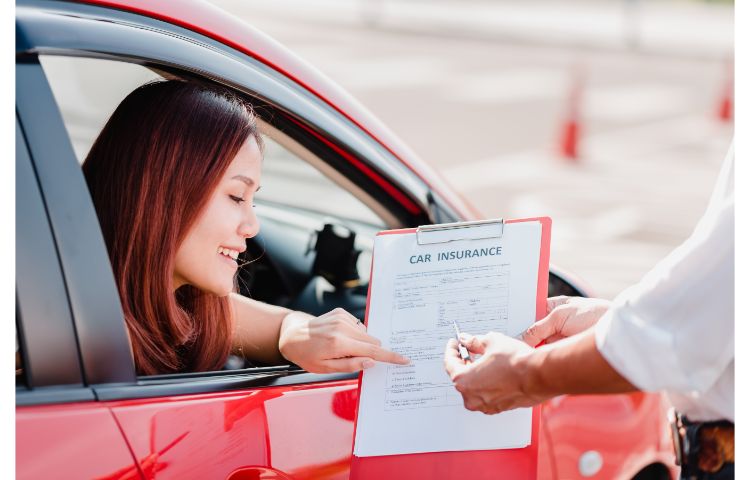Car insurance is a crucial component of owning and operating a vehicle. It provides financial protection in the event of an accident, damage, theft, or other unforeseen circumstances. If you’re a new car owner or simply want a better understanding of how car insurance works, you’re in the right place. This article will explain the essential aspects of car insurance, including how it functions, the types of coverage available, and why it’s necessary.
1. What Is Car Insurance?
Car insurance is a contract between a vehicle owner and an insurance company that protects the driver financially in case of an accident, theft, or damage. In exchange for paying premiums, the insurance company agrees to cover certain financial risks associated with owning and operating a car.
Essentially, car insurance is a safety net that helps minimize out-of-pocket expenses when things go wrong on the road.
2. How Does Car Insurance Work?
Car insurance works by providing coverage for specific events outlined in the insurance policy. When you purchase a car insurance plan, you agree to pay a premium (usually monthly or annually) in exchange for protection from financial liabilities.
Here’s a step-by-step breakdown of how car insurance works:
A. Paying Your Premium
Your premium is the amount you pay to the insurance company for coverage. The amount of the premium is determined by several factors, such as:
- The type of coverage you select (more comprehensive coverage will cost more).
- Your driving history (drivers with a clean record may pay less).
- The make and model of your car (luxury or high-performance cars often cost more to insure).
- Your location (urban areas may have higher premiums due to higher risks of accidents or theft).
- Your age and gender (younger drivers or male drivers may pay higher premiums due to statistically higher risks).
B. Filing a Claim
If you’re involved in an accident or experience an incident that is covered by your policy (such as theft, vandalism, or natural disasters), you file a claim with your insurance company. The claim initiates the process of receiving compensation or reimbursement for damages or losses.
C. Deductibles and Coverage Limits
When you file a claim, the deductible is the amount you must pay out of pocket before the insurance company covers the rest. For example, if you have a $500 deductible and you’re involved in an accident that results in $2,000 worth of damages, you would pay the first $500, and your insurance would cover the remaining $1,500.
Insurance policies also have coverage limits. These are the maximum amounts the insurer will pay out for certain types of claims. For example, if your policy covers $20,000 for property damage but the damages total $25,000, you’ll need to pay the remaining $5,000.
D. Insurance Payouts
Once your claim is approved, the insurance company will pay for the damages up to the limits specified in your policy. Depending on your coverage and the situation, the insurance may cover repairs, medical expenses, or even a rental car while your vehicle is being fixed.
- Example: If your car is damaged in a collision, your insurer will arrange to either repair the vehicle or provide a payout, depending on the damage and whether the repair costs exceed the value of the car.
3. Types of Car Insurance Coverage
There are several types of coverage available when purchasing car insurance. The specific coverage you choose will depend on your needs, budget, and legal requirements in your state or country.
A. Liability Coverage
Liability coverage is required by law in most places. It covers costs related to injuries or damages you cause to others in an accident.
- Bodily Injury Liability: Covers medical expenses for others involved in the accident.
- Property Damage Liability: Pays for damage to another person’s vehicle or property.
B. Collision Coverage
Collision coverage helps pay for repairs to your vehicle if you’re involved in a collision, regardless of who is at fault. It’s especially useful if you have a newer or more expensive car.
- Example: If you crash into another vehicle or a stationary object like a tree, collision coverage will cover the costs of repairs to your car.
C. Comprehensive Coverage
Comprehensive coverage protects your car from non-collision-related incidents such as theft, vandalism, natural disasters, or hitting an animal.
- Example: If a tree branch falls on your car during a storm, comprehensive coverage would pay for the repairs or replacement of your vehicle.
D. Personal Injury Protection (PIP)
PIP provides coverage for medical expenses and sometimes lost wages for you and your passengers, regardless of who is at fault. This type of coverage is required in some states and is optional in others.
- Example: If you’re injured in an accident, PIP will help cover your medical bills and any other related expenses.
E. Uninsured/Underinsured Motorist Coverage
This coverage protects you if you’re involved in an accident with a driver who doesn’t have enough insurance or no insurance at all.
- Example: If an uninsured driver hits you, uninsured motorist coverage will help pay for your damages.
F. Rental Car Coverage
Rental car coverage provides reimbursement for the cost of a rental car while your vehicle is being repaired after an accident.
- Example: If your car is in the shop for repairs due to an accident, this coverage will pay for your rental car expenses.
4. Why Is Car Insurance Necessary?
Car insurance is necessary for several reasons, not just because it’s required by law in most places. Here are the main reasons why having car insurance is crucial:
A. Legal Requirement
In many countries and states, car insurance is required by law. Driving without insurance can lead to legal consequences, such as fines, license suspension, or even jail time.
- Example: In the U.S., every state except New Hampshire requires drivers to have at least liability insurance.
B. Financial Protection
Accidents happen unexpectedly, and without insurance, you may be left with significant financial burdens. Car repairs, medical bills, and legal costs can quickly add up after an accident. Having car insurance helps cover these costs and prevents you from paying out of pocket.
- Example: If you cause an accident, your liability insurance can help cover the medical expenses of the other party, preventing you from facing a lawsuit and paying for damages personally.
C. Protection Against Theft and Vandalism
If your car is stolen or vandalized, comprehensive coverage can help reimburse you for the loss or damage to your vehicle. Without insurance, you may have to bear the entire cost of replacement or repairs.
- Example: If your car is stolen, comprehensive insurance coverage can help you replace your vehicle or cover the repairs if it is found.
D. Peace of Mind
Knowing that you’re protected from unexpected incidents gives you peace of mind. Whether you’re driving on the highway or parked in your driveway, car insurance ensures that you’re covered in case of accidents, damage, or theft.
- Example: When driving long distances, knowing that your car insurance covers accidents, repairs, or medical expenses allows you to focus on your trip without stress.
E. Protection for Other Drivers
Car insurance also protects other people on the road. If you’re involved in an accident and you’re found at fault, liability insurance covers the medical costs and property damage for the other driver, helping you avoid costly lawsuits.
- Example: If you cause an accident where someone is injured, your bodily injury liability coverage will pay for their medical expenses, protecting you financially from the claims they might make.
5. How to Choose the Right Car Insurance
When selecting car insurance, consider the following factors:
- State Requirements: Be sure to meet the minimum required coverage for your state or country.
- Vehicle Type: The type of car you drive may influence the cost and type of coverage you need. High-end cars may require more extensive coverage.
- Budget: Balance the cost of premiums with the level of coverage. While you may want comprehensive protection, you also need to ensure you can afford the premiums.
- Your Driving History: Drivers with a clean record may be eligible for discounts. If you have a history of accidents or traffic violations, your premiums may be higher.
Conclusion
Car insurance is a vital part of being a responsible vehicle owner. Not only does it provide financial protection in case of accidents, damage, or theft, but it also helps ensure you meet legal requirements in most regions. By understanding how car insurance works, the types of coverage available, and why it’s necessary, you can make an informed decision about the best insurance plan for your needs and budget.

